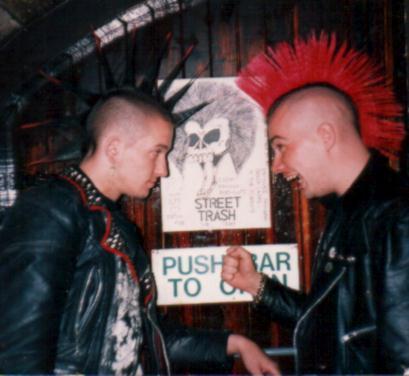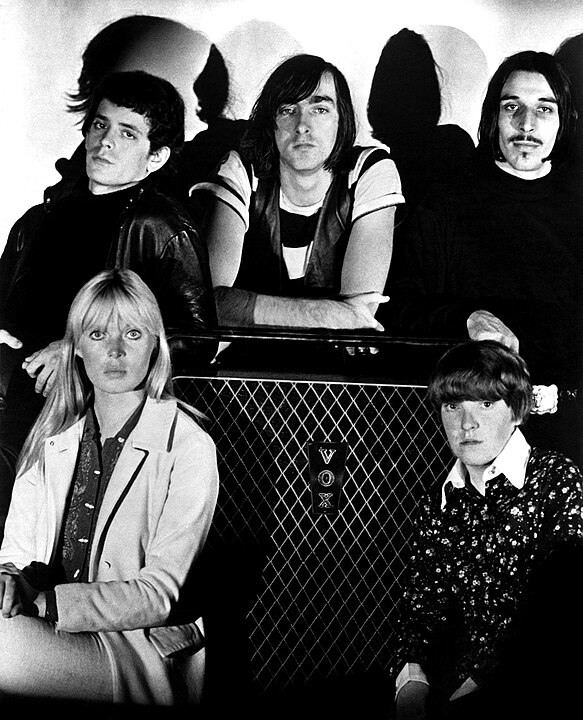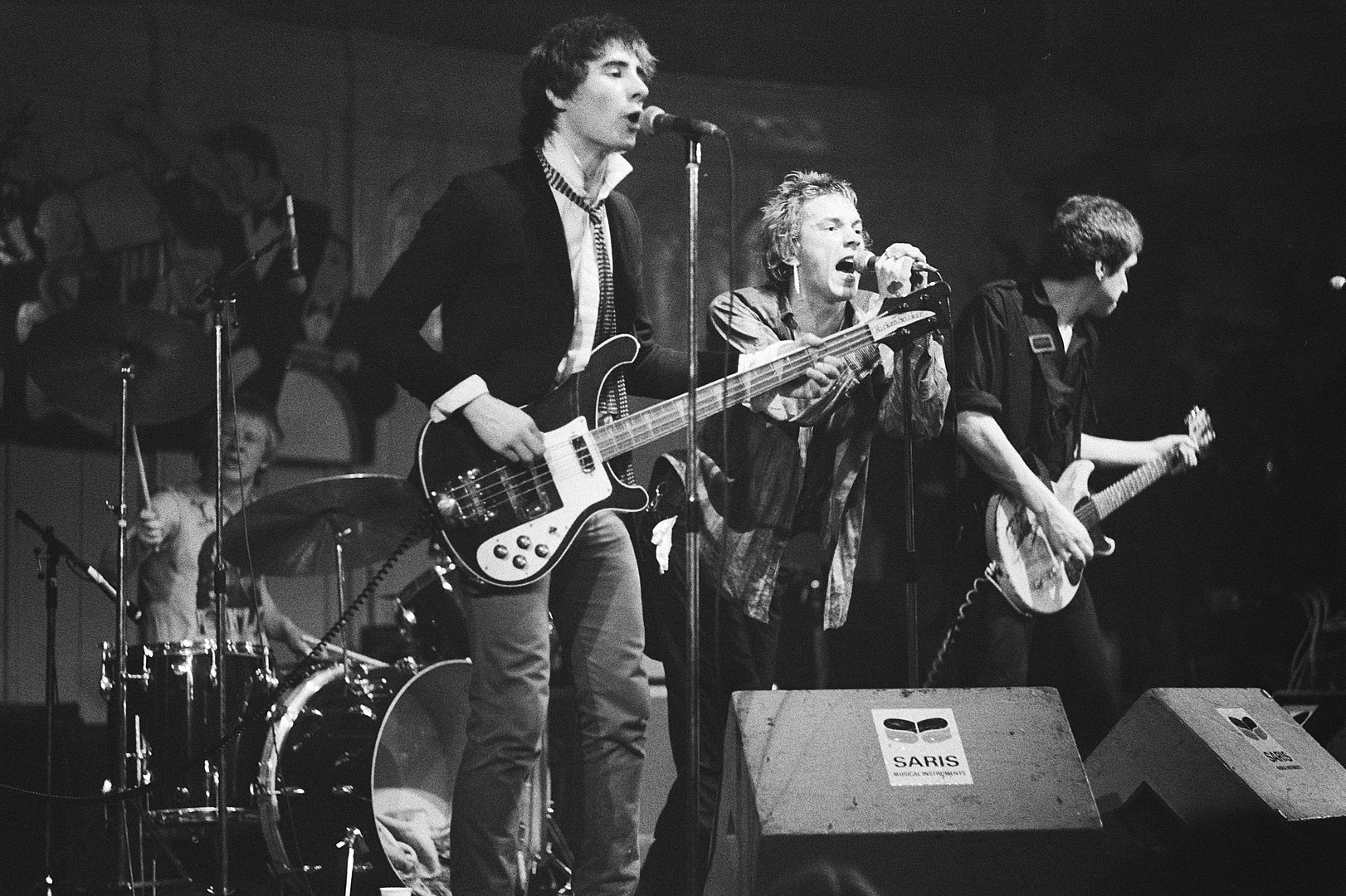In the heart of Manhattan’s Lower East Side, a revolutionary musical movement was born in the mid-1970s, one that would leave an indelible mark on the music industry and culture at large. Punk rock, with its raw energy, minimalist approach, and rebellious spirit, found a fertile breeding ground in the gritty streets and dilapidated venues of this New York City neighborhood. This post explores the rise of punk rock in the Lower East Side, tracing its origins, key players, and the lasting legacy that continues to influence artists and fans worldwide.
Punk Rock’s Beginnings
The State of the LES in the Early 1970s
In the early 1970s, the Lower East Side (LES) of Manhattan was a neighborhood characterized by urban decay and economic hardship. This period was marked by a significant downturn in the economic fortunes of New York City, which was on the brink of bankruptcy by the mid-70s. The LES, in particular, was hit hard, with many buildings abandoned or in disrepair, and crime rates soaring. Despite these challenges, or perhaps because of them, the LES became a fertile ground for a burgeoning underground arts scene. The area’s affordable rents and vacant spaces attracted artists, musicians, and creative minds, leading to the establishment of alternative galleries, music venues, and performance spaces. This environment fostered a sense of community among artists and served as a crucible for artistic innovation and experimentation.
Pre-Punk Influences
The roots of punk music in the LES can be traced back to the influence of 60s garage rock and proto-punk bands. Garage rock, with its raw, energetic sound and DIY ethic, laid the groundwork for the punk movement. Bands like The Sonics, The Seeds, and The 13th Floor Elevators exemplified this genre, often characterized by its amateurish enthusiasm and a rebellious attitude towards the mainstream music industry.
The Velvet Underground, often cited as a proto-punk band, was particularly influential in shaping the aesthetic and ethos of the punk movement that would emerge in the LES. Formed in the mid-1960s and associated with artist Andy Warhol, The Velvet Underground brought a new level of artistic sophistication to rock music, blending experimental soundscapes with gritty, real-life lyrical themes. Their disregard for mainstream success and their exploration of taboo subjects mirrored the disenchantment felt by many in the LES and provided a blueprint for the punk ethos: a blend of artistic seriousness, countercultural rebellion, and a raw, uncompromising sound.
Key Early Punk Bands
Several key bands emerged from the LES punk scene, cutting their teeth at venues like CBGB and Max’s Kansas City, another pivotal venue for punk and new wave bands. Among the most influential were Television, Patti Smith, and The Ramones, each contributing uniquely to the punk tapestry.
- Television: Formed in 1973, Television was one of the first bands to play at CBGB, bringing a more structured, albeit still edgy, approach to punk music. Their complex guitar work and poetic lyrics, exemplified in their landmark album “Marquee Moon,” set them apart from the more straightforward, high-energy punk of their contemporaries.
- Patti Smith: Dubbed the “punk poet laureate,” Patti Smith merged rock and poetry in a way that was unprecedented. Her debut album “Horses,” released in 1975, is a seminal work that blends raw, garage rock-inspired music with avant-garde poetry, capturing the spirit of the LES punk scene and influencing countless artists.
- The Ramones: Perhaps the quintessential punk band, The Ramones burst onto the scene with their self-titled debut album in 1976. With their rapid-fire, sub-two-minute songs, stripped-down instrumentation, and leather-jacketed, jeans-and-sneakers look, The Ramones embodied the simplicity, speed, and directness that would come to characterize punk music.
The emergence of these and other bands in the LES punk scene represented a radical departure from the musical norms of the time. They eschewed the complexity and polish of mainstream rock in favor of a more raw, immediate, and authentic form of expression. In doing so, they laid the groundwork for punk as a cultural and musical movement, with the LES as its crucible. The legacy of this era and these bands continues to influence music and culture worldwide, attesting to the transformative power of the punk movement that emerged from the streets of the Lower East Side.
Characteristics of Punk Music and Culture
Punk music and culture emerged as a stark counterpoint to the prevailing trends of the 1970s, distinguishing itself through its music, ethos, and visual aesthetics. This movement was not just a style of music but a full-fledged cultural rebellion, influencing fashion, art, and attitudes.
Musical Style:
Punk music is characterized by its fast tempo, short and simple songs, and raw, stripped-down instrumentation. This was a deliberate reaction against the era’s mainstream rock, which punk perceived as overly complex, pretentious, and disconnected from the realities and struggles of everyday people. Bands like The Ramones epitomized this with their two-minute, three-chord songs that were direct and to the point, embodying punk’s back-to-basics approach. Lyrics often dealt with themes of rebellion, disillusionment, and social commentary, reflecting the angst and frustrations of a generation.
Punk Ethos:
Central to punk culture was the DIY (Do It Yourself) ethic, which encouraged self-expression and independence from the mainstream music industry. This ethos was about taking control of the means of production, whether it was forming bands without formal musical training, producing zines, or setting up independent record labels. Punk’s anti-establishment views were a rejection of societal norms, authority figures, and the commercialization of music and culture. This attitude was encapsulated in the punk mantra “anyone can do it,” encouraging participation and action rather than passive consumption.
Punk’s disdain for commercialization was not just an ideological stance but a practical one. The movement’s pioneers were often working-class youth who were economically marginalized and disillusioned with the promises of consumer culture. Punk offered an alternative that was both accessible and expressive, allowing for a creative outlet that stood in opposition to the status quo.
Fashion and Visual Aesthetics:
Punk fashion was as much a part of the movement as the music, characterized by a distinctive look that included ripped clothing, safety pins, leather jackets, and mohawks. This style was both a form of self-expression and a visual representation of punk’s rebellious spirit. Vivienne Westwood, a British fashion designer, played a significant role in shaping the punk aesthetic through her work with the Sex Pistols and her influential London boutique, SEX.
The punk look was intentionally confrontational and shocking, challenging conventional notions of beauty and style. It was a visual manifestation of punk’s DIY ethos, with individuals often customizing their own clothing to create unique, personalized expressions of identity. The use of everyday objects like safety pins and razor blades as accessories was both practical and symbolic, repurposing the mundane to create something new and defiant.
The visual aesthetics of punk extended beyond fashion into album art, posters, and zines, which often featured collage, stark black and white graphics, and hand-written text. This visual language was raw and immediate, mirroring the directness of the music and the authenticity of the punk ethos.
Venues and Spaces
The venues and spaces of the Lower East Side (LES) played a crucial role in the development and proliferation of punk music and culture. These locations were more than mere backdrops; they were integral components of the punk scene, fostering a sense of community and providing a platform for emerging talent.
CBGB and Its Role in Nurturing Punk Talent
CBGB, short for Country, BlueGrass, and Blues, unexpectedly became the seminal hotspot for punk music under the ownership of Hilly Kristal. Despite its original intention to feature American roots music, CBGB’s location at 315 Bowery in the LES placed it at the heart of a burgeoning underground scene ripe for a musical revolution. Kristal’s relatively lax booking policy allowed bands that were often too raw or unconventional for other venues to perform, making CBGB a nurturing ground for punk talent.
CBGB’s significance in the punk movement cannot be overstated. It was here that many punk bands, including Television, Patti Smith, The Ramones, and Talking Heads, first gained a foothold, playing their early shows to like-minded audiences. The venue’s cramped space, gritty ambiance, and laissez-faire approach to performances encapsulated the punk ethos, making it the de facto center of the punk universe in New York City. CBGB also became synonymous with the DIY spirit, as bands often self-managed their shows, promotions, and merchandising.
Other Notable LES Venues and Spaces Contributing to the Punk Scene
While CBGB is often the first venue associated with punk in the LES, several other spaces contributed significantly to the scene:
- Max’s Kansas City: Although located just north of the LES in Chelsea, Max’s Kansas City played an essential role in the early punk scene alongside CBGB. It was a gathering spot for artists, musicians, and poets, serving as a stage for early performances by the Velvet Underground, New York Dolls, and Patti Smith.
- ABC No Rio: Founded in the early 1980s, ABC No Rio emerged as a collective space dedicated to art and activism, embodying the DIY ethos of punk culture. Known for its hardcore punk matinee shows, it provided an alternative to the increasingly commercialized punk scene, focusing on community, inclusivity, and resistance to mainstream culture.
- The Mudd Club: Opening in 1978, The Mudd Club offered a more eclectic and artsy twist on the punk scene, attracting a blend of musicians, artists, and downtown celebrities. It was known for its avant-garde performances and theme nights, contributing to the post-punk and no wave movements.
- Tier 3: As another venue that supported the burgeoning no wave and post-punk scenes, Tier 3 was vital in providing a space for experimental music and performances, further diversifying the punk landscape in New York.
These venues, each with its unique character and community, played pivotal roles in the evolution of punk music and culture in the LES. They provided stages for bands to hone their craft, spaces for fans to gather, and environments that encouraged the creative exchange of ideas. The legacy of these venues lies not just in the music that was played within their walls but in the lasting impact they had on the punk movement and the broader cultural landscape.
The Punk Movement Beyond Music
Punk as a Lifestyle and Attitude
Punk’s impact extended beyond the sonic realm into fashion, visual arts, literature, and even philosophy, embodying a holistic approach to rebellion against the status quo. The movement’s ethos was evident in the way punks dressed, with their DIY-modified clothing featuring ripped fabrics, safety pins, and bold, anarchic messages. This fashion was not just about appearance but was a form of personal expression and resistance.
In visual arts, punk aesthetics influenced a generation of artists and photographers who captured the raw energy and gritty reality of the punk scene. Graffiti, poster art, and album covers designed by punk artists featured the movement’s signature stark, confrontational style, often employing collage techniques and bold, hand-drawn lettering. This visual language was not only a form of artistic expression but also a means of communication within the punk community, conveying messages of solidarity, dissent, and independence.
The Role of Punk in Fostering Community and Activism
The LES punk scene was not just a collection of individuals but a tight-knit community bound together by shared values and a common desire for artistic and personal freedom. Venues like CBGB and ABC No Rio served as communal spaces where punks could gather, exchange ideas, and support each other’s creative endeavors. This sense of community was further strengthened by the challenges punks faced from mainstream society, including police harassment and public misunderstanding, which galvanized the movement and fostered a strong in-group solidarity.
Punk’s anti-establishment ethos naturally aligned with activism, leading many within the punk community to engage with political and social causes. Issues such as anti-authoritarianism, animal rights, anti-racism, and gender equality were commonly addressed within punk music, ‘zines, and art. The movement’s emphasis on direct action and personal responsibility inspired punks to organize protests, benefit concerts, and community events aimed at effecting change.
Legacy and Influence
Lasting Impact on Subsequent Musical Genres
Punk’s raw energy and simplicity left an indelible mark on a variety of subsequent musical genres. Post-punk emerged as a direct offshoot, blending punk’s rawness with more experimental sounds and diverse influences, leading to bands like Joy Division and Talking Heads. Hardcore punk intensified punk’s speed and aggression, giving rise to a more confrontational sound with bands like Black Flag and Minor Threat. Indie rock, too, owes a debt to punk, adopting its DIY ethos and often its raw sound, albeit with a broader palette of musical influences.
DIY Spirit in the Modern Music Industry
Punk’s DIY ethos has profoundly influenced the modern music industry, especially within independent artist movements. This spirit is alive in the way artists self-produce music, distribute it online, and use social media to build communities and engage with fans directly. This approach has democratized music production and distribution, allowing a more diverse range of voices to be heard without traditional gatekeepers.
Cultural Legacy in the LES and Evolution Amidst Gentrification
The cultural legacy of punk in the LES is significant, with the neighborhood’s identity deeply intertwined with the movement’s history. Despite the area’s gentrification, which has changed the landscape dramatically, echoes of the punk era persist in street art, remaining music venues, and the community’s enduring rebellious spirit. The challenge of maintaining this legacy amidst rapid development and change continues to inspire both reflection and creative resistance within the community.
The Punk Movement Today
In reflecting on the enduring legacy of punk rock, it’s crucial to consider the movement’s evolution and current state. Today, the punk ethos continues to thrive, both in underground scenes and in more mainstream manifestations. Modern punk bands and artists, while perhaps enjoying a broader platform thanks to digital media and the internet, still channel the same spirit of rebellion and social commentary that defined the early days in the Lower East Side. The DIY ethos of punk has also seen a resurgence, with many bands self-producing music and using social media to bypass traditional industry gatekeepers.
Moreover, the punk movement today extends beyond music, influencing fashion, visual art, and political activism. Punk’s questioning of authority and emphasis on individual freedom and expression resonate with new generations facing contemporary issues, from social injustice to environmental concerns. This adaptability and continued relevance underscore punk’s lasting impact, demonstrating that the movement is not just a relic of the past but a living, evolving force that continues to challenge and inspire.
Conclusion
The Lower East Side of New York City played a pivotal role in the emergence and evolution of punk rock, serving as a vibrant crucible for the genre’s rebellious spirit and raw energy. This neighborhood, with its unique blend of cultural diversity, economic hardship, and artistic ferment, provided the perfect backdrop for punk’s rise in the 1970s. Through iconic venues like CBGB and influential bands such as The Ramones and Patti Smith, the Lower East Side not only nurtured punk’s nascent sounds but also embodied its ethos of defiance and DIY authenticity. The legacy of this era and locale continues to resonate, underscoring the enduring impact of the Lower East Side on punk rock and the broader musical landscape.



